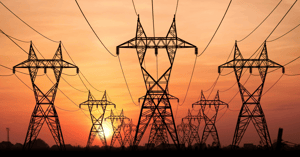Managing stakeholders in energy?
Whether you work in gas, electric or water – the peculiar nature of the energy sector is one that mandates a unique method for addressing some problems it poses.
A significant factor that can pose a threat to the success of any project is the stakeholders involved – both internal stakeholders and external stakeholders.
The energy sector, which entails the construction of infrastructures like electricity grids, or wind farms, can face a negative reception from stakeholders within the community, and if these stakeholders are not adequately managed, the project as a whole might not be successful.
This is why it is very important to acknowledge stakeholder importance and to properly engage and manage them to reduce risks.
A major threat to the success of any project in the energy sector is the external stakeholders. The government and citizens play a significant role in policy implementation in this sector and the acceptance of the project, so we will focus on this key area.
How to manage stakeholders in the Energy sector
The energy sector involves large-scale projects, and with this comes the risk of dealing with varying opinions of people on the relevance or feasibility of the project.
There are two common misconceptions when it comes to an external stakeholder’s resistance:
Firstly, it is the concept that they feel they lack adequate knowledge about the project. It is believed that once stakeholders can understand and know the facts about the project, they will most likely support the project.
This is popularly known as the deficit model, and to solve this knowledge deficit, there has to be proper risk management in communication, whereby more research is done on the project, and there is sensitization of these external stakeholders. Of course, revealing more information could reveal different uncertainties about the project!
Secondly, there is the concept of self-interest. This is the idea that resistance occurs due to external stakeholders’ selfish interests. Simply put, it's the belief that if someone’s interests don’t align with the project, then there will be opposition.
At this point, it becomes a fight between personal interest and public interest. Therefore, to realign, this is where compensations are given to appease.
When it comes to the best method to engage stakeholders and reduce risk, there are some obvious stages.
It is recommended that public engagement should occur during the early stage, precisely the implementation stage of a project. This is a learning process whereby there is the exploration of different views of a problem to find out the best solution. If you can start early enough, external stakeholders feel like they are a part of the project.
The next real step in managing stakeholders in energy is effective communication, whereby information flows seamlessly between both parties. Apart from giving the stakeholders information, it is also good to ask stakeholders for advice to provide a precise stakeholder analysis. Society is dynamic; therefore, things could change – opinions, ideas, and oppositional stakeholders can become advocates.
The behaviours of stakeholders are classified as project risk; therefore, controlling the stakeholder’s behaviour will help reduce that risk.
How to engage with different stakeholders?
There's a variety of communication channels you can leverage, to name a few:
1. Schedule meetings: Take the initiative to schedule meetings, rather than your stakeholders.
2. Send out weekly or monthly newsletters: Be consistent in sending up-to-date information via email.
3. Have online meetings: With hundreds or thousands of stakeholders, online meetings are more practical than meeting in person most of the time.
4. Prioritise offline meetings as well: Make sure you’re also scheduling meetings face-to-face.
5. Deliver project summary reports: Keep your stakeholders up to date with project summaries after a project finishes.
6. Schedule conference calls: If you’re unable to meet online or face to face, get on a call.
7. Meet informally for lunch: It’s one of the best ways to show your stakeholders they’re part of the team.
The benefits of stakeholder software for engagement and management
Stakeholder engagement sits at the heart of every project that you work on, and whether internal or external, is critical to your business succeeding.
If stakeholder engagement matters to you, stakeholder management software should be something that will interest you.
Tractivity offers stakeholder management software and is an all-in-one management system for Stakeholder Communication, Engagement and Reporting.
It is extensively used by a whole range of organisations in the Energy, Utilities, Transport and NHS sectors to manage their stakeholder interactions.
Tractivity organises stakeholders, communication and reporting together for one central source for stakeholder management. It can send branded mailshots, manage events, build surveys, send text messages, generate letters and send both mass and one-to-one emails.
This means the business will have no more separate logins to various comms tools, no more licence subscriptions with different expiry dates and a single tool used consistently organisation-wide.
Tractivity reports gather information from the entire project and summarise key activities whenever you need it, and help you gather real insights from your stakeholders, at any time.
There’s so much you can achieve with Tractivity. To learn more, get in touch with us today.

